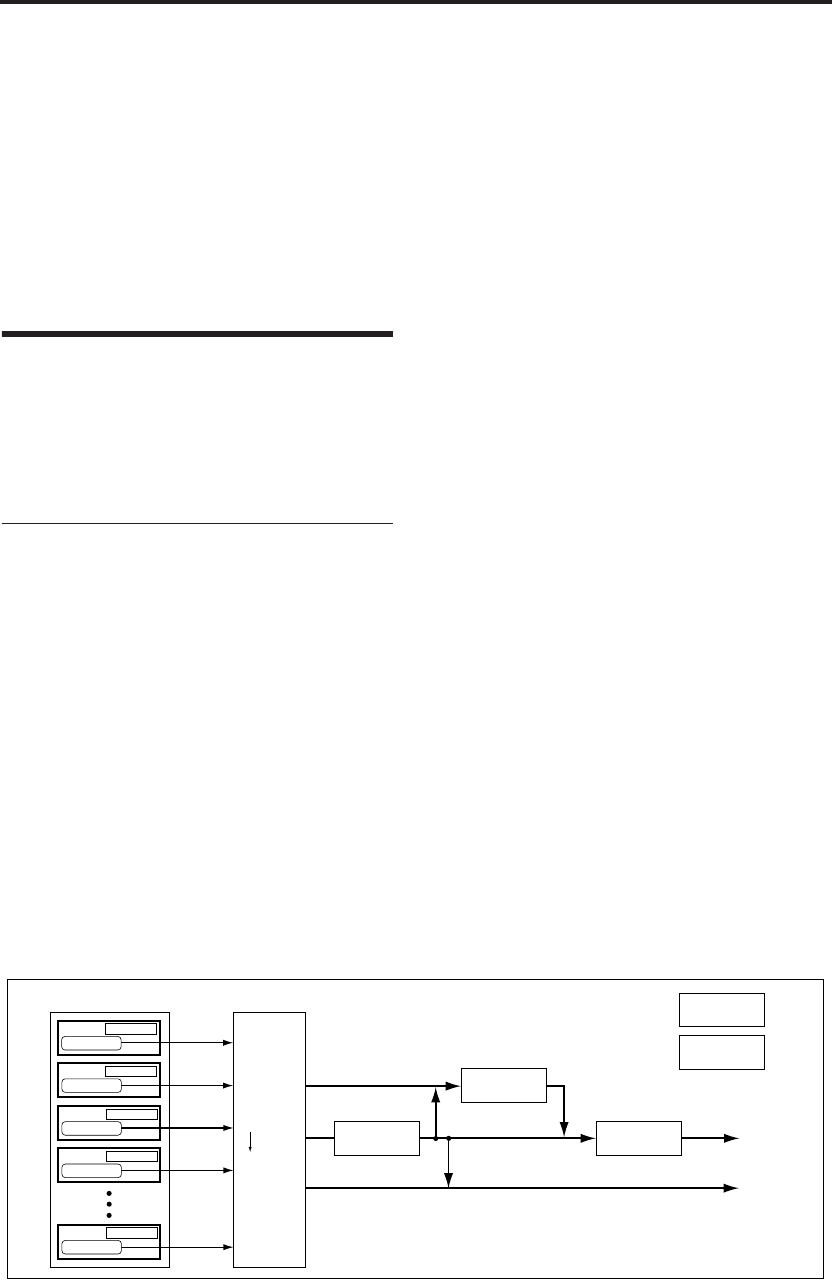
Playing and Editing Combinations
62
Detailed Editing with Combinations
You can edit any of the preloaded combinations or
start with an initialized Combination (Bank C 127:
Init. Combination) to create your own original
sounds.
You can use the factory Programs to create new
Combinations, or use your own custom Programs.
You can write (save) these combinations in any
bank A–C.
Before you begin editing
A combination has eight timbres. Each timbre con-
sists of a program with parameters such as key-
board zone, velocity zone, mixer settings, MIDI
channel, and filter. See the diagram entitled “Com-
bination structure and corresponding pages.”
Overview of Combi mode parame-
ters
Select a program for each timbre
In the COMBI 0: Play, Prog page (or COMBI 1: Ed–
Tone Adjust, Prog page), select a program for each
timbre.
Status and MIDI settings
In the COMBI 2: Ed–Track Param, MIDI page, set
“Status” to INT for the timbres that you want to
play, and set their MIDI channel to the global
MIDI channel.
Layer, split, and velocity switch
In the COMBI 5: Ed–Key Zone, Key page and the
6: Vel Zone, Vel page, specify the range (layer,
split, velocity switching, etc.) in which each pro-
gram will sound.
Adjust the programs so that they fit
within the combination
For each timbre program, specify the poly/mono
setting and adjust timbre parameters such as por-
tamento and transpose.
Effects
The output of each timbre is sent to the insert
effect, the master effects, and the master EQ. You
can use the mixer section to freely specify how the
audio signals will be routed.
There is one insert effect and two master effects,
and for each of these you can choose one of 89
effect types. The master EQ is a stereo three-band
EQ.
Note: The effect settings created and saved with a
program in Program mode are not used in
Combination mode. Effect settings are made
independently for the combination.
Arpeggiator
A combination can use two arpeggiators (dual
polyphonic arpeggiators). You can select the
arpeggio pattern, specify the range in which the
arpeggio is generated, and specify the region of
notes (keys) or velocities that will trigger the
arpeggiator.
Parameters
Parameters
Parameters
Parameters
Insert Effect :
8-2, 3
AUDIO OUTPUT
L/MONO, R
Master Effect 1, 2 :
9-1...3
AUDIO OUTPUT
INDIVIDUAL 1,2
MasterEQ :9-4
Controller Setup : 7-5
Arpeggiator: 7-1...4
Timbre2
Timbre3
Timbre8
Timbre4
Insert Effect :
8-1
Timbre
Insert Effect
Master Effect
Individual Outputs
Timbre1
Parameters
Program
Program
Program
Program
Program
Combination structure and corresponding pages
1–1, 9–4, etc. indicate the microX on-screen pages and tabs.


















